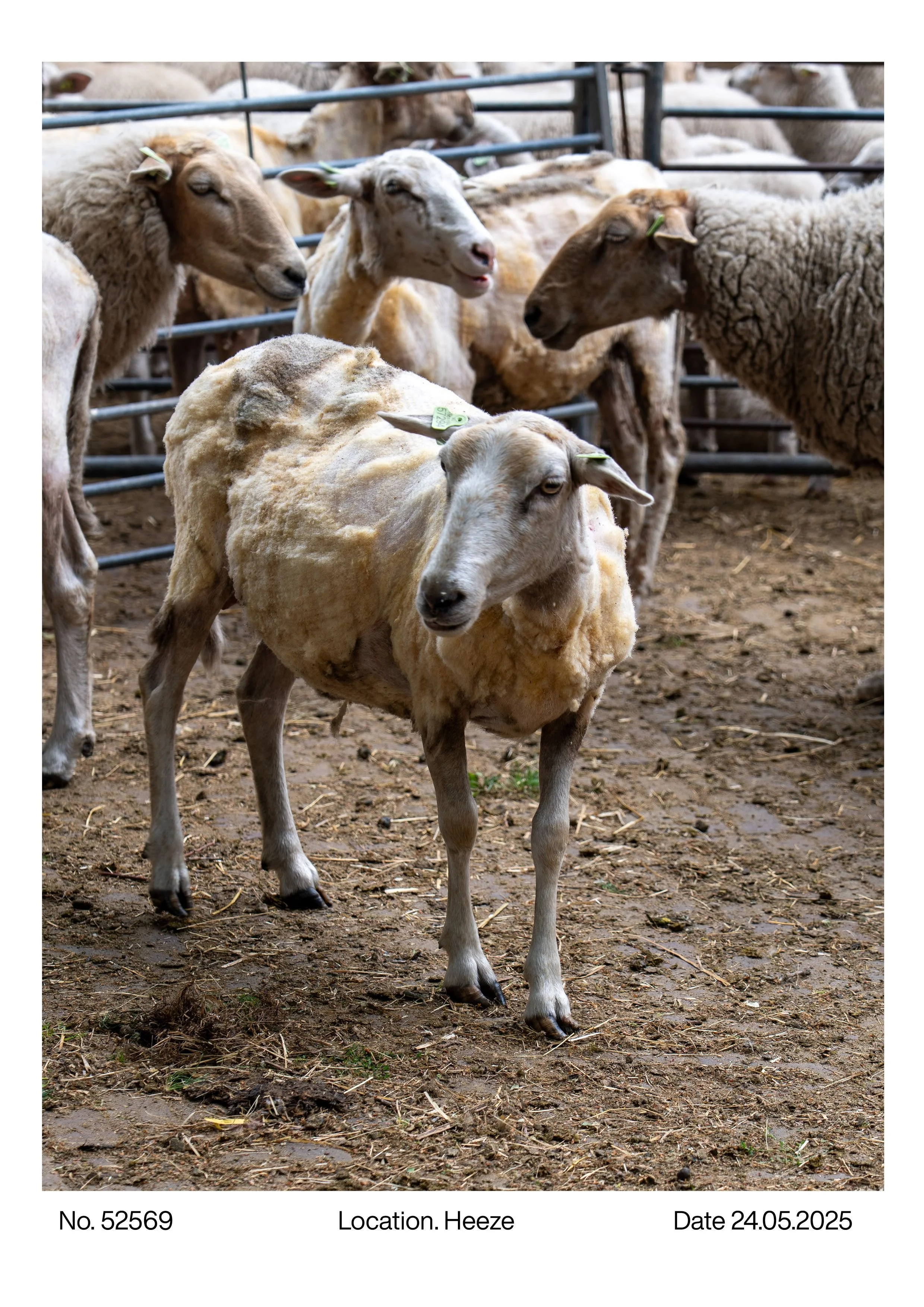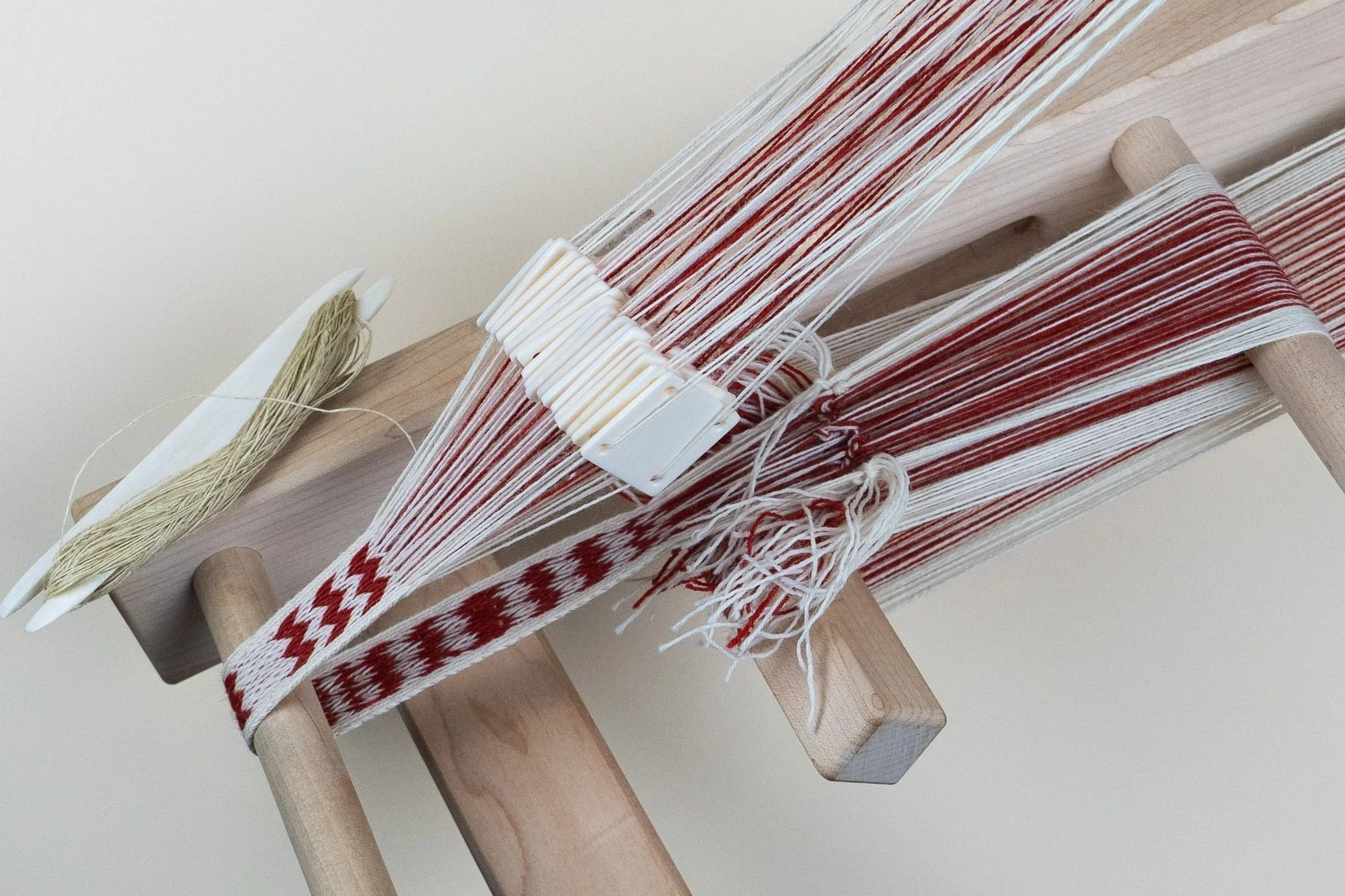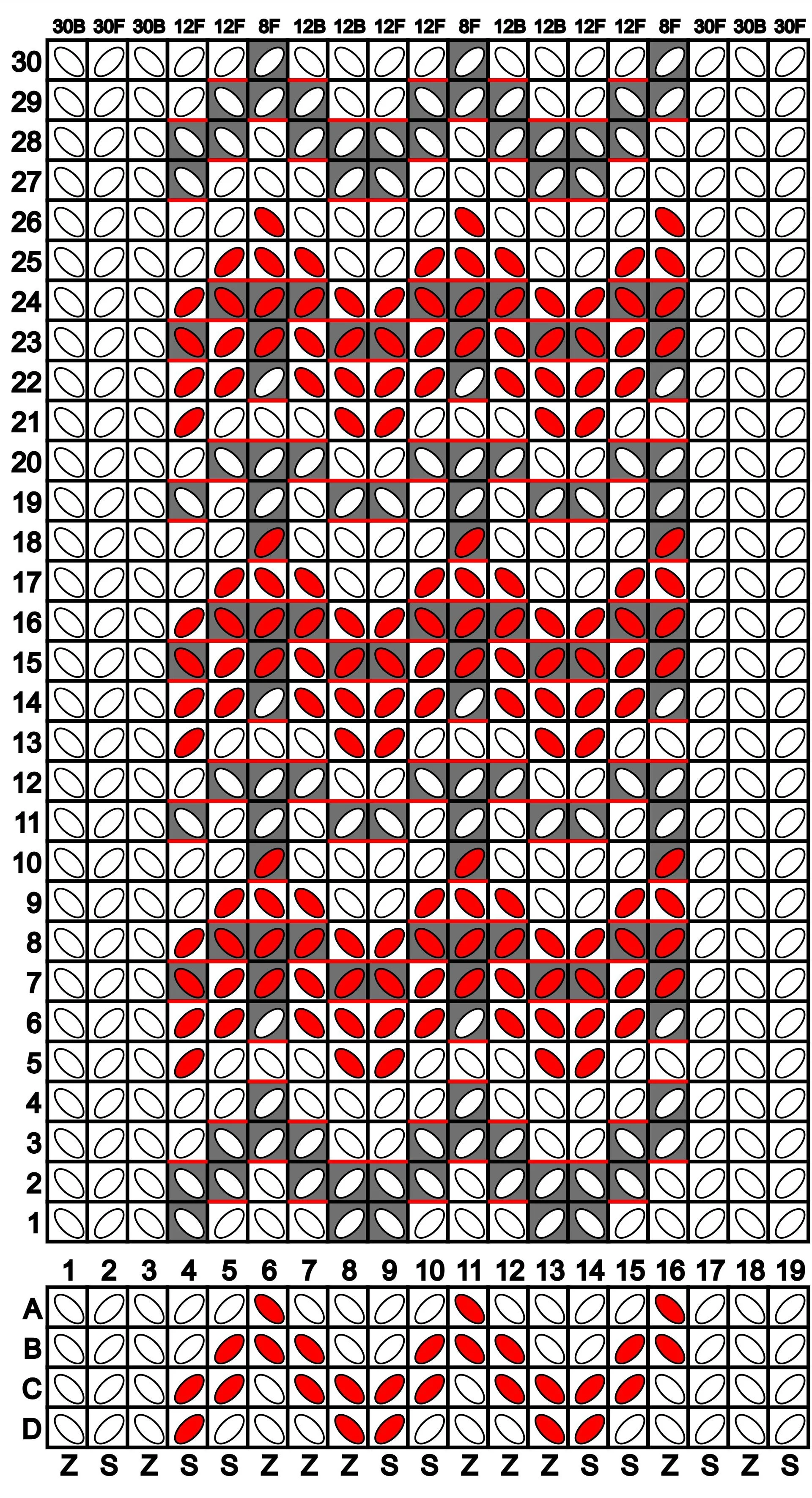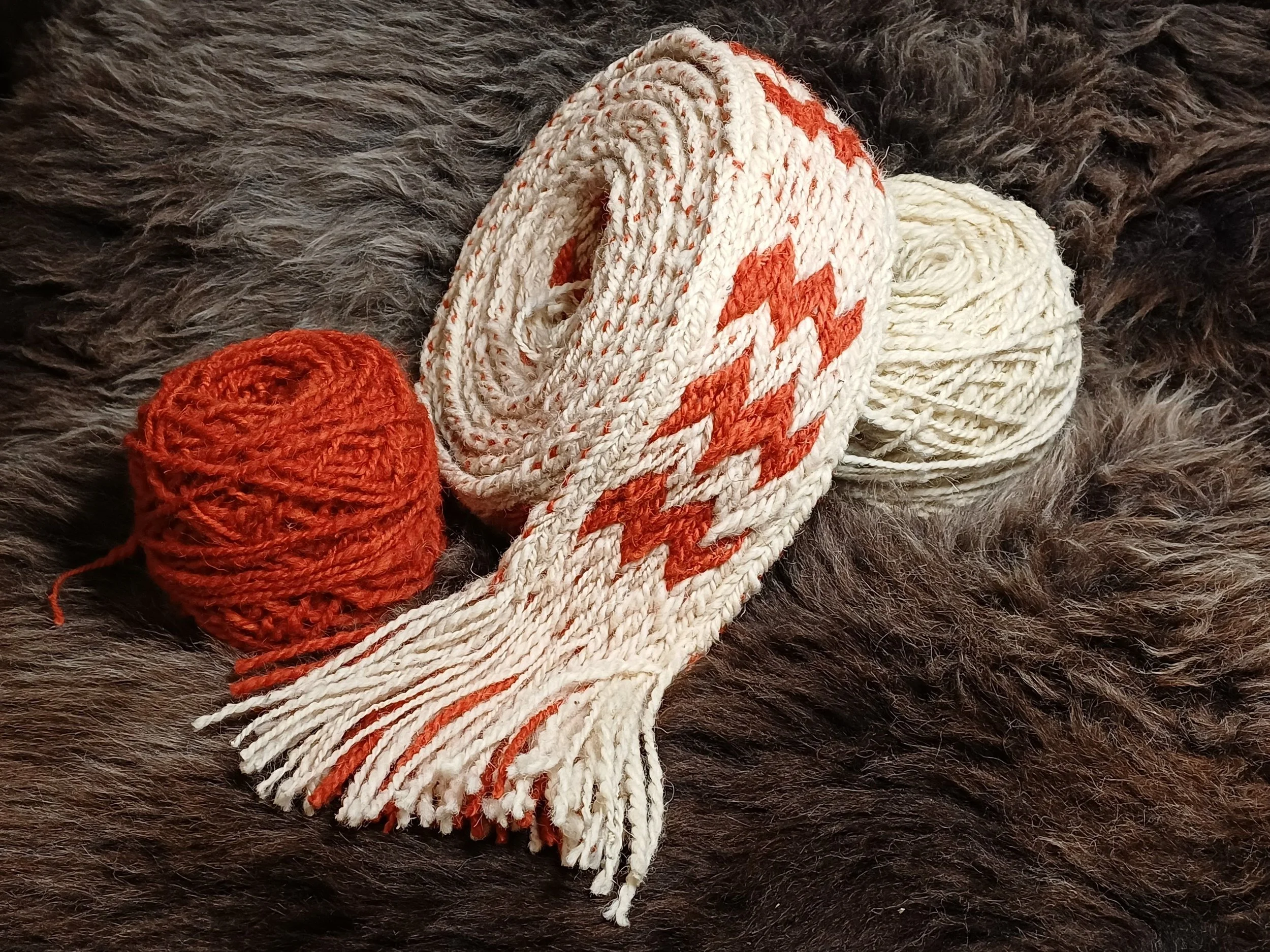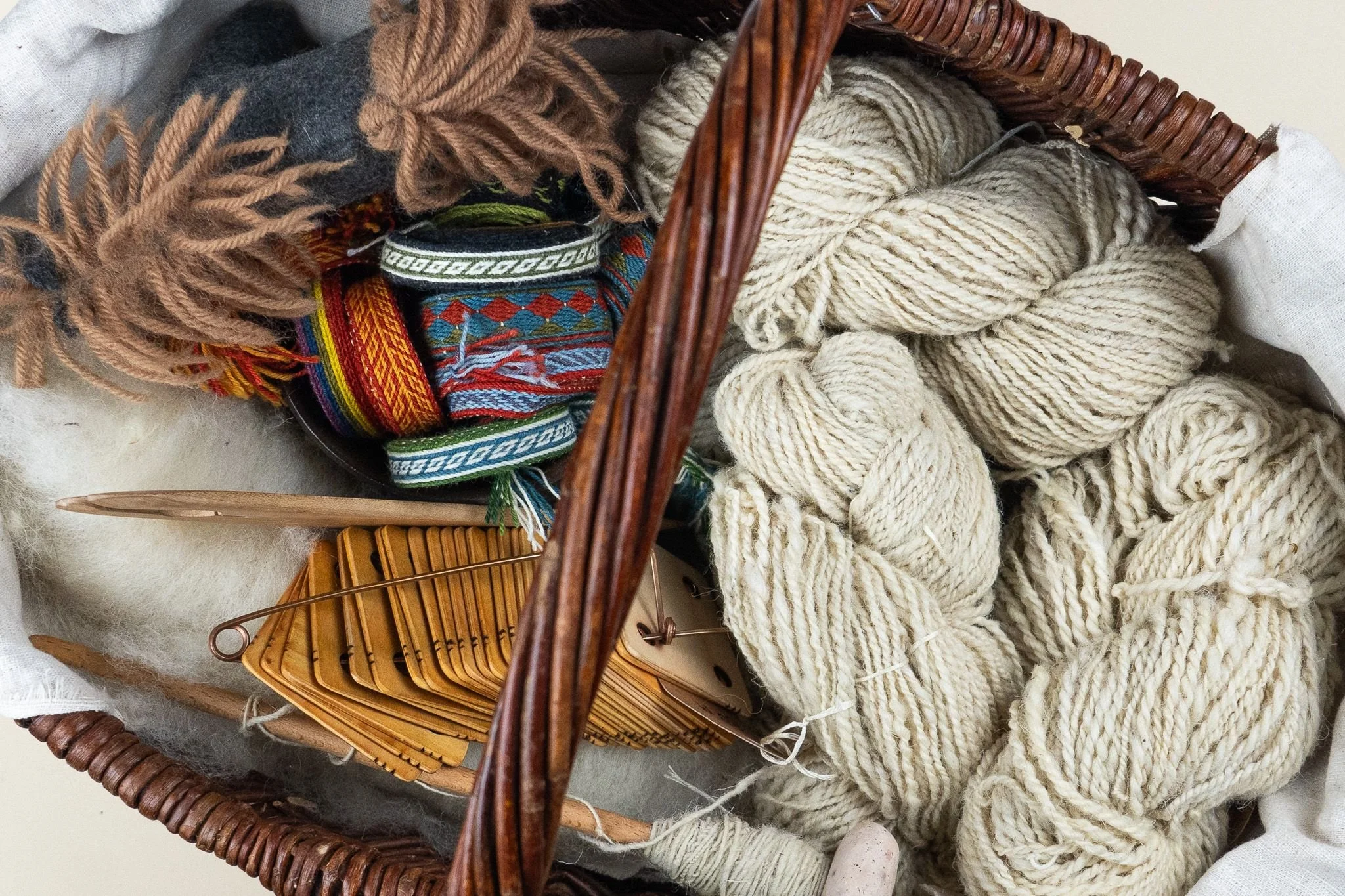Emily
“I wanted to document the whole process from wool ‘fresh off of a sheep’ till finished product. Apart from that I wanted to include my work at Prehistorisch Dorp, which is a museum here in Eindhoven. To tie it all together I decided to make a cardwoven band with the ‘vibes’, the logo, of Eindhoven on it.”
When did you start working with wool?
I have always been creative but I started working with wool 3 years ago.
What's your craft origin story?
When I started working at 'prehistorisch dorp' in Eindhoven in April 2023. During my job interview my potential new manager asked me if there were any historical crafts I wanted to learn while working there. I saw a set of cardweaving tools on top of her cabinets amd recognised them. So that turned into my answer as I genuenly had an interest in it before. My manager replied with something along the lines of 'that is quite difficult, there is an easier version, I can teach you that.' Which activated my ADHD and put me into 'pure spite' mode. This was very much because the thought popped into my head that I still had 2 months to learn if I really wanted to. Within a weekend I had researched for 5 hours on how to make a warp weighted loom and use playingcards to make the tablets. That weekend I made my first band. It was very bad, the tension of the warp was off, the colors were too closely together so you could not see the pattern. But I learned a lot and my second band was very pretty. I still use it today as a keycord/lanyard.
What technique did you use for your regional wool project?
Cardweaving also sometimes known as Tabletweaving. A weaving technique to make narrow bands used as belts, bag straps, garterbelts or decoration on clothing. It is also used to make edge on large pieces of cloth. The oldest archeological find dates back to 900-800 BCE.
Did you try out a new technique while making your project? And would you use it again?
I used a lot of techniques, but all parts of the project I have done on different occasions. I have never done a project where I went from raw wool to finished product though. That was new to me. The whole line goes; Washing, plucking, combing/carding, spinning, twining, dyeing and weaving. I also made my own pattern for the belt I made.
Can you write a short summary of your project?
I made a cardwoven band with the 'Vibes' of Eindhoven on it.
How many hours did it take you to compete?
If I only count active hours of working on the project I think it took me about 100 hours. Divided over the +-4 months we had for the project. If I had to do it all by hand and not using my e-spinner I think it would have added 25 more hours to the project as I am not a star at hand spinning yarn yet.
What was the inspiration for your project?
I wanted to document the whole process from wool 'fresh off of a sheep' till finished product. Apart from that I wanted to include my work at Prehistorisch Dorp, which is a museum here in Eindhoven. To tie it all together I decided to make a cardwoven band with the 'vibes', the logo, of Eindhoven on it.
What did you discover from using regional wool in your project?
That our sheep love to roll in muck. It was very hard to get the wool clean enough to spin with. Because you have to gently wash the wool, and can not make it too hot for the risk of felting it there is still a lot of bits and pieces in it. It also contained a lot of bits of short hair which turned into little felted balls which i had to keep picking out while spinning the wool. I lost a big quantity of wool this way.
What were the trial and error of the project?
I underestimated the amount of work this would take. I also wanted to do more of this project at the museum than ended up being the case. Life happened and I found out I have a connective tissue disorder, which made carding and spinning all the wool by hand a very bad idea. Which is why I ended up doing a lot on my e-spinner and on a carding mill someone bestowed upon me during the project. Of this I was very grateful. I am sad that I did not get to experience the full amount of work it cost. Because that was one of my goals on the project. Other than that things went quite smoothly. Some tweaks to the pattern here, re-twining some wool there. All in all things went good.
What does weaving and spinning do for you personally?
For me it is a way to wind down after my day job at a daycare where I take care of some very sweet, but loud babies. And I love to show this craft during my extra workday at the museum on the weekends. Usually I have a cup, plate or bowl close to show off everything I have made close by. I love talking to people that people about 3000 years ago could make things like this, and explain how labor intensive work was in those days.
Do you have any tips for people who want to work with wool in their own projects? And why would you recommend it?
Calculate how much wool you are going to need if you want to spin a project. I thought I would need 265 meters of twined yarn, but ended up spinning 25% more. This because I was afraid of breakage and mistakes on my part. Aldo, make a mockup with scrap wool to test out your pattern. It is a very bad idea to 'just do it!' as they say. Make sure your process is correct before you start.
